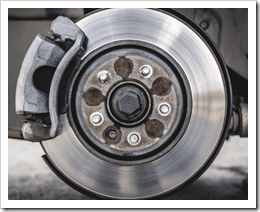- IAEA Working Groups on AI
- IAEA Report on AI and Nuclear Energy
- US Nuclear Regulatory Commission Strategic Plan and Workshops on AI
- OECD/Nuclear Energy Agency – Task Force on Artificial Intelligence and Machine Learning for Scientific Computing in Nuclear Engineering
The often quoted mantra of silicon valley’s entrepreneurs is “move fast and break things.” This past week saw a head spinning example of it in the rapid firing and rehiring of Sam Altman as CEO of OpenAI that is an international market leader in the field of artificial intelligence.
On November 17th the board of directors of the firm, reportedly alarmed by Altman’s headlong leap into commercialization of the firm’s flagship product ChatGBT, hit the brakes and fired him on the grounds that he was in a runaway train mode of giving priority to product development over safety considerations and that he wasn’t keeping them informed of his profit making plans.
The board’s sudden action, taken without consultation with major investors, like Microsoft which has a 49% stake of $13 billion invested in the firm, was almost certainly based on assessing Mr. Altman’s binding curve of energy being a harbinger of the kind of existential threat to humanity prognosticated by the doomsday wing of the AI R&D community.
Yet, after considerable corporate maneuvering, on November 21st Altman was back in the saddle as CEO and the three board members who fired him had themselves been given the boot. A key factor was effect of a letter signed by 700+ employees of the firm, its key resource and means for its existence, threatening to quit if Altman was not restored to his former position. Backing by Microsoft for Altman and the employees was also a major factor in enabling his return.
My purpose in writing this post, while highlighting some of the turmoil at a leading AI firm, is to communicate that highly credible agencies within the nuclear energy world, which have global influence, are addressing the issue of AI and nuclear energy in a responsible manner.
What Does all this Mean for the Use of AI by the Nuclear Industry?
First of all, as a highly regulated industry in any country that has operating nuclear reactors of any kind – commercial, R&D, and for weapons – Altman’s silicon valley investor’s paradigm of moving fast and breaking things is a complete nonstarter.
That said, it is worth briefly reviewing some of the work taking place to get the industry ready to make use of artificial intelligence while at the same time insuring that the risks of doing so are well understood and under verifiable control.
In short, how can the nuclear industry position itself, commercially and in terms of common sense regulation, to take advantage of an area of rapid innovation without hitting the brakes and failing to advance the industry’s capabilities across a broad range of technical disciplines?
What follows are some brief pointers to three significant efforts to get the global nuclear energy industry positioned to make use of AI in a safe, verifiable manner.
Note to readers: Sam Altman is also an investor in Oklo, a developer of a 15 MW advanced microreactor. It may be that down the road the firm will get a look at using some of OpenAI’s technology
IAEA Working Groups on AI
 Last September at the 4th IAEA General Conference, the IAEA launched a global dialogue on the potential of AI for nuclear science and the related implications of its use, including ethics and transparency.
Last September at the 4th IAEA General Conference, the IAEA launched a global dialogue on the potential of AI for nuclear science and the related implications of its use, including ethics and transparency.
The IAEA said in a press statement the by combining digital simulations of real nuclear facilities with AI systems, the industry can optimize complex procedures and improve reactor design, performance and safety. Such optimization can increase the efficiency of operations and reduce maintenance costs.
Machine learning — a process whereby AI learns by analyzing large amounts of data — helps to automate tasks and thereby increase reliability and avoid errors. Furthermore, AI has considerable analytical and predictive potential to help monitor power plant processes and detect anomalies.
According to the IAEA, AI can contribute to nuclear security and safety in several ways. It can be used in the processing of data from radiation detection systems to enhance the detection and identification of nuclear and other radioactive material.
It can be applied to analyze data from physical protection systems to improve the detection of intruders. It can also help spot anomalies that could indicate a cyber-attack on a nuclear facility.
Furthermore, in the realm of radiation protection, the integration of AI in safety standards-related software can reinforce the protection of the millions of workers with occupational exposure in medicine, construction, mining, shipping, agriculture and nuclear power.
In terms of nuclear nonproliferation and safeguards, the IAEA said that AI can help manage large amounts of data obtained by various means, such as satellite imagery, environmental sampling, gamma ray spectroscopy and video surveillance. AI can help nuclear inspectors and safeguard analysts with the analysis of these data.
“Machine learning methods have already been used to detect outliers in large datasets and assist in verifying spent fuel and analyzing surveillance recordings. AI is expected to further improve the efficiency of safeguards implementation by reducing the number of repetitive tasks performed by inspectors.”
IAEA Report on AI and Nuclear Energy
In 2021 the IAEA hosted a Technical Meeting on Artificial Intelligence for Nuclear Technology and Applications aimed at providing an international, cross-cutting forum to discuss and foster cooperation in nuclear science, technology and applications, radiation protection and nuclear security and safeguards verification.
The objective was to identify priorities for future activities in these fields and how the IAEA can support their implementation. The meeting — the first of its kind — was also an opportunity to reflect on the ethical considerations of the convergence of artificial intelligence and nuclear technologies.
In 2022 the IEA published a major report on AI and nuclear energy which provides an overview of the current state of the art, outlines challenges and identifies opportunities for accelerating nuclear applications, science and technology with artificial intelligence.
The publication covers the uses of AI in the fields of nuclear sciences and applications, nuclear power, nuclear safety and security and safeguards verification, are considered. There is also a dedicated chapter on ethics pertinent to AI in the nuclear field.
Citation: INTERNATIONAL ATOMIC ENERGY AGENCY, Artificial Intelligence for Accelerating Nuclear Applications, Science and Technology, Non-serial Publications , IAEA, Vienna (2022). (PDF file 98 pages)
US Nuclear Regulatory Commission Strategic Plan and Workshops on AI
 The U.S. Nuclear Regulatory Commission (NRC) said on its website that the agency recognizes that interest in artificial intelligence (AI) is growing rapidly in both the public and private sectors and anticipates increased use of AI in NRC-regulated activities.
The U.S. Nuclear Regulatory Commission (NRC) said on its website that the agency recognizes that interest in artificial intelligence (AI) is growing rapidly in both the public and private sectors and anticipates increased use of AI in NRC-regulated activities.
The NRC defines AI as referring to a machine-based system that can go beyond defined results and scenarios and has the ability to emulate human-like perception, cognition, planning, learning, communication, or physical action.
“For a given set of human-defined objectives, AI can make predictions, recommendations, or decisions influencing real or virtual environments.”
The NRC Strategic Plan 2023-2027 (NUREG 2261) focuses on a broad spectrum of AI sub-specialties (e.g., natural language processing, machine learning, deep learning, etc.) which could encompass various algorithms and application examples which the NRC has not previously reviewed and evaluated.
Anticipating the industry’s potential application of AI to NRC-regulated activities, the NRC has developed a strategic plan that includes five goals:
(1) ensure NRC readiness for regulatory decision-making,
(2) establish an organizational framework to review AI applications,
(3) strengthen and expand AI partnerships,
(4) cultivate an AI-proficient workforce, and
(5) pursue use cases to build an AI foundation across the NRC.
Four Workshops
The U.S. Nuclear Regulatory Commission (NRC) in 2022 and 2023 host a series of Data Science and Artificial Intelligence (AI) Regulatory Applications Public Workshops to provide a forum for the U.S. NRC, nuclear industry and stakeholders to discuss the state of knowledge and research activities related to data science and artificial intelligence and their application in the nuclear industry.
The numerous presentations for the four workshops are found on this NRC webpage
OECD/Nuclear Energy Agency – Task Force on Artificial Intelligence and Machine Learning for Scientific Computing in Nuclear Engineering
 According to the OECD/NEA, recent performance breakthroughs in artificial intelligence (AI) and machine learning (ML), including advances in deep learning (DL) and the availability of powerful, easy-to-use ML toolboxes, have led to unprecedented interest in AI/ML among nuclear engineers.
According to the OECD/NEA, recent performance breakthroughs in artificial intelligence (AI) and machine learning (ML), including advances in deep learning (DL) and the availability of powerful, easy-to-use ML toolboxes, have led to unprecedented interest in AI/ML among nuclear engineers.
However, the agency says “the full potential of AI/ML techniques has yet to be fully realized.”
“One barrier is that existing ML methods often do not meet the needs of nuclear engineering (NE) applications. Application-agnostic algorithms, or those designed for more traditional ML applications such as computer vision and natural language processing, cannot typically be directly applied to scientific data in NE and require non-trivial, task-specific modifications.”
Furthermore, NEA notes there is no common AI/ML benchmark or activity to validate and compare different developed ML methods and algorithms.
Finally, NEA asserts there are significant gaps in the predictive capability assessment and improvement of ML models. Specifically, to enable more trustworthy applications in high-consequence systems like nuclear reactors that are subject to nuclear safety regulations, the ML practitioners have to consider a few critical unresolved issues, including the verification, validation and uncertainty quantification (VVUQ) of AI/ML, data scarcity, scaling-induced uncertainty, and lack of physics in black-box ML models.
All this requires the development of an AI/ML benchmark that will provide guidelines and exercises in various computational domains to help participants to develop and evaluate the performance of their ML methods.
NEA has established a task force to address these issues. The Task Force will design benchmark specifications to evaluate the performance of AI/ML in multi-physics modeling and simulation (M&S) of reactor systems, under the guidance of the Expert Group on Reactor Systems Multi-Physics (EGMUP), will provide guidelines to the Working Party on Scientific issues and Uncertainty Analysis of Reactor Systems (WPRS), and the nuclear community on the scientific development needs (data, methods, and benchmark exercises) for trustworthy AI/ML applications to nuclear scientific computing problems.
Key outcomes of the task force scope of work include;
- Standardized benchmark exercises with certified experimental data and high-fidelity computational data for the training of AI/ML models;
- Detailed guidelines for applying AI/ML methodologies for supervised, unsupervised, and semi-supervised ML, as well as advanced topics such as deep generative learning and probabilistic ML;
- Proposals towards the development of VVUQ requirements of AI/ML models in nuclear systems based on consensus positions of the TF;
- Guidelines for improving AI/ML trustworthiness through accuracy, robustness (reproducibility, applicability) and transparency (explainability, interpretability);
- Training opportunities to demonstrate AI/ML principles and practices; and
- Demonstrations of the AI/ML guidelines for specific applications.
Contact the agency for details and updates.
# # #
















